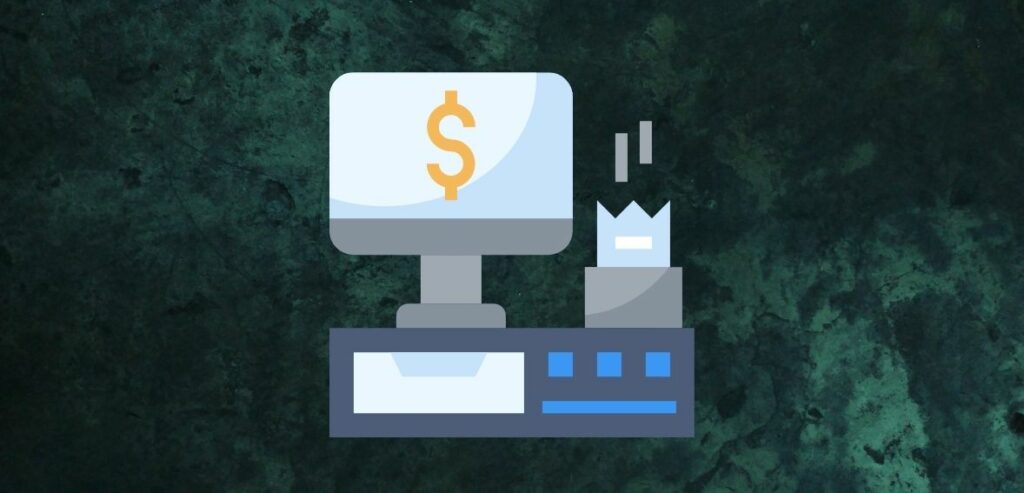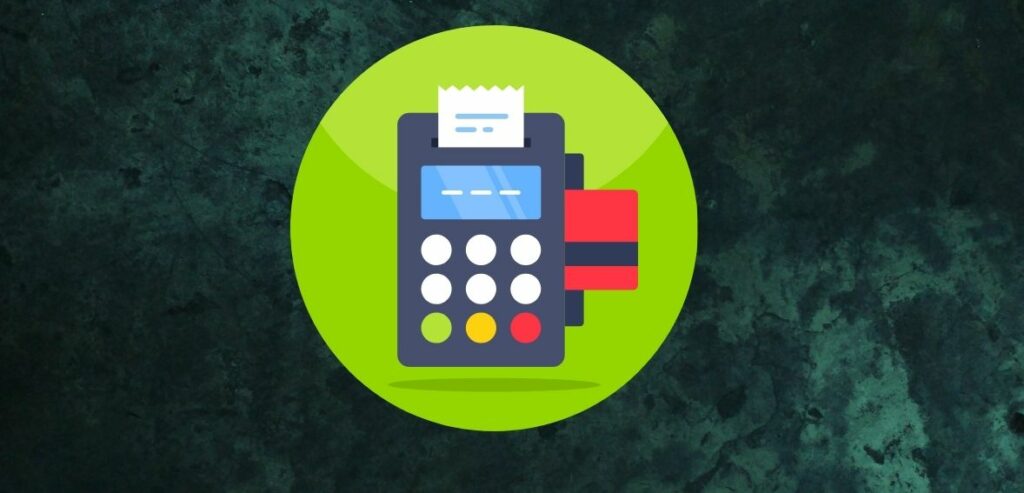Point of Sale (POS) is one of the most critical aspects of every day-to-day transaction in a service business. It is essentially a helpful system of different hardware and software that can handle all sales-related transactions in a business. POS is a thorough service or technology that includes devices such as a card reader, receipt printers, barcode scanners, and more. It helps in more than just checking the customer and their purchases. Rather, POS systems are slowly finding functions in more areas. Used mostly by restaurants and other similar B2C services, POS is used mainly to simplify sales management.
2024 is expected to be a landmark year for point-of-sale technology trends. With rapid growth in the AI field, POS is anticipated to adapt to this new technology quickly. Besides AI, more advancements in Data Science and Machine Learning are expected to reshape the way POS scanners help in sales management. From small business owners to restaurant chains, POS will likely become more user-friendly for everyone. These systems are also expected to manage transactions, keep track of inventory, and store detailed sales data with greater accuracy.
What is Point-of-Sale Technology
Point-of-sale technology is mostly used in restaurants and other retail services that let customers make payments quickly via card or other digital methods. From the perspective of the staff or the management, a POS helps them record sales data and store it for future use.
From the hardware point of view, this technology uses computer interfaces, tablets, card readers, receipt printers, and barcode scanners. They also include other hardware components, such as restaurant kitchen display systems, depending on the industry in which they are used.
Which Businesses Benefit from Using Point-of-Sale Technology

Point of Sale technology benefits many businesses, with the following being its main user base:
- Retail
- Restaurants
- Hospitality
Retailers use POS systems to stay updated on inventory levels, smoothly process all sales transactions, and analyze the data later. In restaurants especially, POS systems manage orders and seating arrangements and help maintain a good customer service experience. Other service-based businesses use this same technology for scheduling important activities and payments. Overall, POS technology is a valuable asset for any business that involves sales transactions for its efficiency and accuracy in day-to-day operations.
POS Trends to Watch Out for in 2024
The following is a list of top POS trends to watch out for in 2024:
Integration of Artificial Intelligence
As discussed above, AI is expected to change how POS works. One of the best features of AI integration is its agility, which means POS will now quickly adapt to the different needs of every industry.
Besides AI, machine learning can also bring significant changes to POS systems. ML algorithms can analyze the type of products a customer likes and the ones they continuously purchase and store them to provide personalized recommendations for future purposes.
In 2024, this level of personalization is expected to become the norm for POS Systems. This technology, which was once meant for checkouts only, will now hold onto data to give owners and managers better insights into how their business is performing.
Contactless and Mobile Payments
With COVID-19, people have witnessed a surge in using contactless payment methods. This trend gave way to contactless payments using mobile phones and similar devices, which will likely transcend from a temporary to a new norm. Customers already prefer quick and secure transactions requiring zero physical contact, and businesses using POS can easily include contactless payment options in their POS systems.
Speaking of mobile phones, integrating mobile POS systems is becoming more popular among relevant sectors as it allows businesses to conduct transactions anywhere within store premises. This leap in technology will benefit retailers considerably with limited store space. This will also help those looking to eliminate traditional checkout counters gradually.
Omnichannel Retailing
The landscape of omnichannel retailing continues to evolve, and by 2024, POS systems will be instrumental in seamlessly integrating online and offline channels.
Nowadays, shoppers expect a streamlined and unified shopping experience, regardless of purchasing from a brand’s physical store, website, or mobile app.
With the latest advancements in POS technology, retailers can effectively embrace omnichannel retailing by synchronizing inventory, customer data, and sales information across multiple platforms. This streamlines the shopping process for customers, who can quickly begin their journey on one channel and seamlessly switch to another without disruptions.
For example, customers can browse products on a brand’s website, try them at a physical store, and then conveniently complete their purchase on a mobile device.
Improved Security Measures
Cyber threats are becoming more dangerous and severe with each passing year. Detecting them, too, has become a matter of concern for many. For POS systems, which handle vast amounts of sensitive customer information, most importantly financial information, strengthening their cybersecurity measures should be a priority.
Modern POS Systems already come with end-to-end encryption, ensuring that sensitive data is protected throughout the transaction process. Tokenization is another security measure that gradually replaces cardholder data, such as card numbers and unique IDs, with random numbers known as tokens.
Better Data Integration
POS systems now have the power to integrate data for future uses. This data is likely to help business owners strategize accordingly. Integrating POS systems with other business tools, such as Customer Relationship Management (CRM) software and inventory management systems, is becoming more common. POS is the point where the sales transaction takes place, which makes it a flawless source for data collection.
This accessible data guarantees companies the chance to improve consumer interactions and take care of other processes effortlessly. Since other sectors are making great improvements using data, this will let POS promptly adjust to shifting market trends.
Personalized Shopping
Using advanced POS technologies, business owners can use data from customer purchases to further plan their interactions with customers. Personalized shopping experiences have become a norm, and enabling it through POS means that many businesses, which were earlier missing out on this technology, will be able to start enjoying its benefits. POS systems can recommend proper products, discounts, or promotions in real-time.
From promotions to bringing back customers to the same businesses to target them with proper loyalty programs, POS personalization can make retail even more customer-oriented. As businesses use POS personalization, they will build stronger connections with customers, creating a shopping environment that is not just transactional but deeply individualized and engaging.
Adapting Cloud-Hosted POS
Cloud-hosted POS solutions, seamlessly integrated with POS hardware, offer automated backup and syncing of data through a remote server. This feature means safekeeping and updating information about one’s retail business becomes easier. It also helps provide a central storage or inventory for sales data and other important customer information.
Moreover, cloud-based POS software allows one to control their business from virtually anywhere. A cloud-hosted POS solution makes all business data accessible over the cloud, which can be accessed via the Internet. This enables businesses to effortlessly check the number of daily sales, employee productivity reports, and materials in their inventory using their devices.
It’s expected that using cloud-hosted POS services will gain significant popularity in the upcoming years as an important part of the newest POS trends in 2024. Many businesses are already enjoying the advantages of these features.
With the help of this new technology, businesses can quickly start working from new locations, introducing new products, and starting new sales channels, all thanks to the transition from traditional retail point-of-sale systems to cloud-based solutions. Due to its independence from non-portable hardware fixed to one place, a cloud-based point-of-sale service will allow businesses to generate more revenue without needing huge investments.
POS for Data Analytics
Point of Sale data analytics is crucial to contemporary retail operations. Retailers can gain essential insights into customers’ behavior, preferences, and purchase habits by utilizing the data supplied by point-of-sale systems. Enterprises can discern patterns, enhance inventory control, and customize their marketing tactics by integrating point-of-sale data with other client information.
Retailers can make data-driven, well-informed decisions with the help of POS data analytics, giving them a competitive edge in a changing market. Businesses may improve their operations and remain adaptable to changing consumer trends by incorporating powerful analytics capabilities into POS systems, which can be used for anything from forecasting product demand to creating more personalized shopping experiences.
Simpler POS Hardware
A noticeable development in Point-of-Sale technology is the move toward more straightforward, easier-to-use hardware solutions. Slicker, more effective replacements for large, traditional monitors are iPads and tablets. This change aims to improve user experience by streamlining and simplifying POS procedures.
Less complicated point-of-sale hardware promotes mobility and flexibility in retail settings and helps keep checkout areas tidy. Companies increasingly realize the importance of giving customers and staff an intuitive interface. As a result, the focus on minimalism in point-of-sale hardware signifies a dedication to enhancing operational effectiveness while accommodating the evolving inclinations of technologically proficient customers.
Customer Loyalty Programs
Retailers who want to build long-lasting customer ties must continue implementing customer loyalty programs. These programs have developed in the POS technology setting by incorporating cutting-edge functionality into POS systems. POS systems typically come integrated with loyalty program features these days, enabling companies to provide individualized rewards quickly depending on client loyalty.
Retailers use these initiatives to promote brand affinity, reward consumer loyalty, and promote repeat business. Easy access to loyalty programs and their connection with POS systems make for a unified and smooth shopping experience. Businesses use point-of-sale technology to enhance client connections and create brand loyalty in response to changing customer expectations.
How Many POS Systems Are There

The number of POS systems in the market is extensive and continually expanding. Numerous providers are catering to businesses of various sizes and industries. Well-known options include MicroSale, Lightspeed, Toast POS, and more.
The diversity in POS systems allows firms to choose solutions that align with their specific needs, ensuring optimal functionality and scalability. The continually evolving market ensures that businesses can select a POS system tailored to their industry, size, and unique requirements, reflecting the dynamic nature of technology in meeting the diverse demands of companies.
What is the Hardware Component of a POS system
The hardware components of a POS system include the following:
- A central processing unit (CPU)
- Monitor
- Cash drawer
- Receipt printer
- Barcode scanner
- Card reader.
The CPU is the system’s brain, running the POS software, while the monitor displays transaction details. The cash drawer securely stores the money, and the receipt printer prints out customer receipts. Barcode scanners fasten product scanning, and card readers facilitate electronic payments.
This comprehensive set of hardware parts ensures a smooth sailing Point of Sale experience. Businesses can customize their POS hardware setup based on their specific requirements, allowing flexibility and scalability in adapting to various transaction needs and all types of business environments.
Anticipating POS Trends in 2024

The current trends in POS technology underscore a transformative period for the retail industry. From the widespread adoption of contactless payments and the integration of AI to the rise of multichannel commerce and the emphasis on customer loyalty, businesses are embracing advanced POS solutions to stay competitive.
Cloud-based systems, mobile POS options, and data analytics are becoming core components, allowing retailers to improve productivity, personalize customer interactions, and make a lasting impact in the sales management sector. Staying ahead of these trends is the need of the moment for businesses looking to thrive by using POS services in the long term.

